As a child, scientist Dr Shaun Forgie was obsessed with snakes, so it was unfortunate he grew up in one of the few countries in the world that doesn’t have any. Instead he grubbed about in Ruakaka looking for other creepy crawlies, then completed a science degree specialising in insects.
Forgie had planned a masters on parasitic wasps and their impact on fly strike in sheep. As one does. But one day in the lab, he had a Road to Damascus moment that was to change his life, but could potentially have a far greater influence - producing a major change in New Zealand’s farming ecosystems.
“I saw a cow pat. I don't even remember why I was looking at a cow pat, but out of the top of the dung pile popped a dung beetle.
“I'd heard about dung beetles, but they were like a holy grail in my world. And that moment completely encapsulated my future.
“From then on, I switched the focus of my masters on to that beetle, and how effective it was in New Zealand.”
Subscribe to Two Cents' Worth for free on Apple Podcasts, Spotify, Stitcher, RadioPublic or wherever you listen to your podcasts
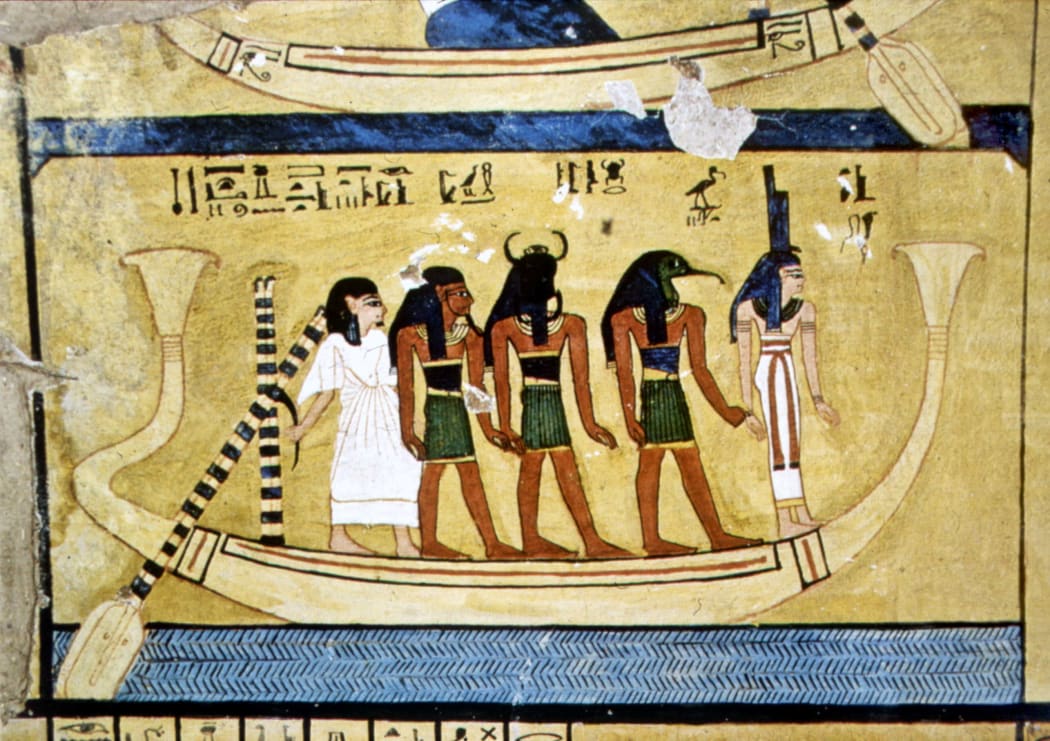
Epyptian gods, including Khepri - half man, half dung beetle Photo: © Collection Roger-Viollet / Roger-Viollet
Like Forgie, most New Zealanders have probably never seen a live dung beetle. Though anyone with a passing interest in Ancient Egypt will know the scarab beetle - a dung beetle elevated to the status of a god.
People might also have seen dung beetles on wildlife programmes. David Attenborough, for example, is a fan.
Beetle as waste disposal unit
As Attenborough explains, the role of the dung beetle on Africa’s Serengeti plains, and everywhere else in the world, is to get rid of poo. Cow poo, sheep poo, camel poo, elephant poo.
As he says in the video: “Millions of dung beetles from over 100 different species provide a highly efficient waste disposal service.”
They eat the dung, roll it into balls, and tunnel it underground to make poo nests and to feed their babies. That reduces the amount of dung sitting on the surface, or running into rivers after rain. But at the same time, the buried dung improves the quality of the soil for up to half a metre below the surface. And that means better absorption and less contamination of waterways.
“Without this help from dung beetles, the daily dose of 5000 tonnes [of dung] would soon swamp the plains,” Attenborough says.
The trouble for New Zealand is that when early European settlers brought farm animals into the country, they forgot to bring the dung beetles that in other countries are a critical part of the farming ecosystem.
“New Zealand brought livestock, minus the cleanup crew after them,” Forgie says. “We have nine million, maybe 9.5 million cows in production a year. And each cow typically poos about two litres, 10 times a day. That's a lot of shit.”
The Environmental Protection Agency estimates our cows produce around 85 million tonnes of dung every year. Our sheep - 27 million of them - produce about 14 million tonnes.
Altogether, that’s pretty much 100 million tonnes of dung a year.
Lying about on the fields, the dung also provides a breeding ground for flies and internal parasites that plague farmers and their stock.
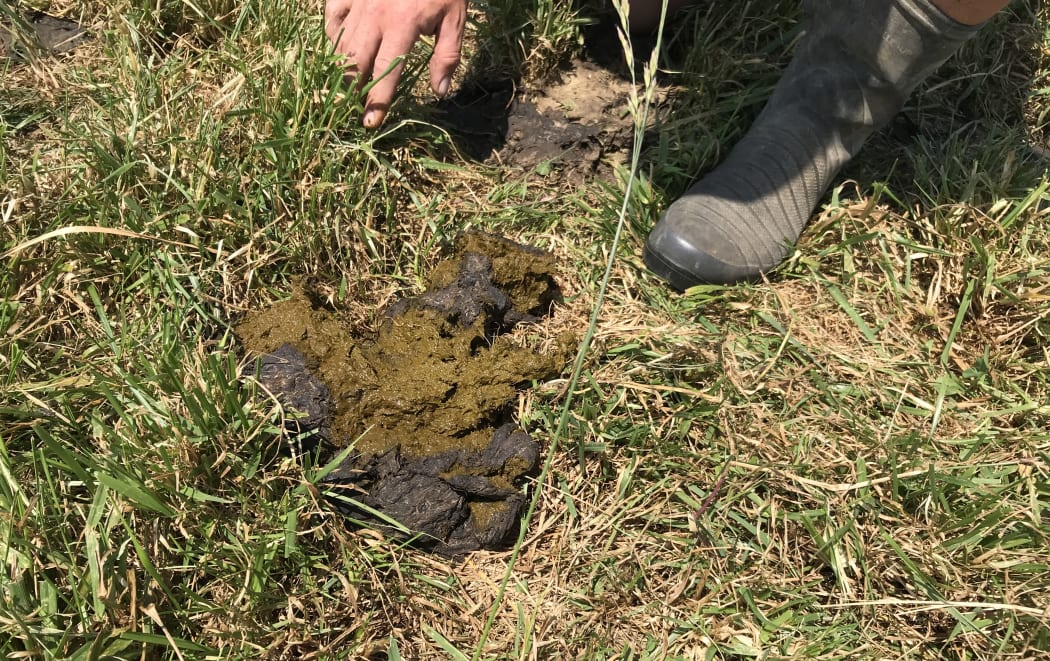
In New Zealand, a cow pat could stay on the surface for a month or more, with risk of contaminants getting into waterways. In Africa, dung beetles mean the dung is gone in minutes. Photo: RNZ/Nikki Mandow
So how did Forgie’s beetle get here?
Australia has the same problem as New Zealand - lots of sheep and cow poo and no dung beetles adapted to deal with it. But across the Tasman, starting from the 1960s, the Australian government has imported, bred and introduced dung beetles all over the country. A few Aussie dung beetles have snuck over to New Zealand over the years and bred, but never in big enough numbers to make a difference. Forgie's original dung beetle is likely a descendant of one of these beetles.
New Zealand also has native dung beetles, but these stick to the bush, eating bird poo, stick insect poo, even giant snail poo - but not cow and sheep poo.
Inspired by his first dung beetle, Forgie attached himself to a project run by a fellow entomologist, Jenny Dymock, who was trying to get approval to bring exotic species of dung beetles into New Zealand. When that attempt failed, Forgie decided he needed more scientific evidence about dung beetles and headed to South Africa where he did a PhD on dung-rolling scarabs.
He was also able to satisfy his childhood obsession with snakes.
Forgie ended up one of the world’s leading experts on dung beetles. And then he came back to New Zealand.
“I wanted to bring understanding of dung beetles back to New Zealand with the idea of trying to improve our pastures because I could see there was a major problem here.
“I thought ‘this country's in trouble; it doesn't have a proper set of dung beetles’.”
Boon or blight?
The story of how Forgie and his colleagues - including Jenny Dymock - fought to get the New Zealand authorities to allow them to bring dung beetles into New Zealand is one of setbacks and frustrations.

There are more than 6000 species of dung beetle worldwide. Photo: RNZ/Nikki Mandow
Scientists and environmentalists fought against the idea of introducing a non-native species, and the pro-dung beetle lobby had to prove that introducing the species wouldn’t - among other things - harm earthworms, or spread disease via possums.
There was even a guy selling bagged manure on the side of the road who argued dung beetles would put him out of business.
The fact that the dung beetle had automatically gone onto a list of unwanted organisms having been turned down for introduction in the past didn’t help at all.
It took years to do the research to prove bringing the beetles in was safe.
“We beat them with the science and we kept going until they ran out of arguments,” Forgie says. In the meantime the debate got so heated some people at Landcare Research started referring to it as “Dung-gate”.
Approval: Just the beginning
It was 2011, 20 years after Forgie was first involved in Dymock’s project to import dung beetles, that he finally got permission from the Environmental Risk Management Authority to bring in 11 different species of beetles.
The reason he needed so many species is that dung beetles are a nightmare workforce. For a start, they are very fussy eaters. A species that will eat cow poo, might not eat sheep poo, for example.
They are also very particular about where they live. Some like hot places, some cooler, some want it dry, some like it wet. So you have to find the right beetle for your own climate.
Most difficult of all is that while dung beetles are hard workers, they are also big sleepers. They might spend three months packing away the dung, but then they head underground for up to nine months to sleep, breed, raise their young and wait for conditions on the surface to be just how they like them.
In fact, sometimes if conditions aren’t right on the surface, some dung beetles can skip a season and just stay underground for the whole year.
It’s like the biggest human resources nightmare you can imagine.
Nonetheless, in 2014, Forgie and businessman Andrew Barber founded Dung Beetle Innovations, to breed and sell dung beetles to farmers. Three years later they took over a large site near Whenuapai outside Auckland which they hoped would give them the room to significantly upscale production, and start making good money from their beetle breeding business.
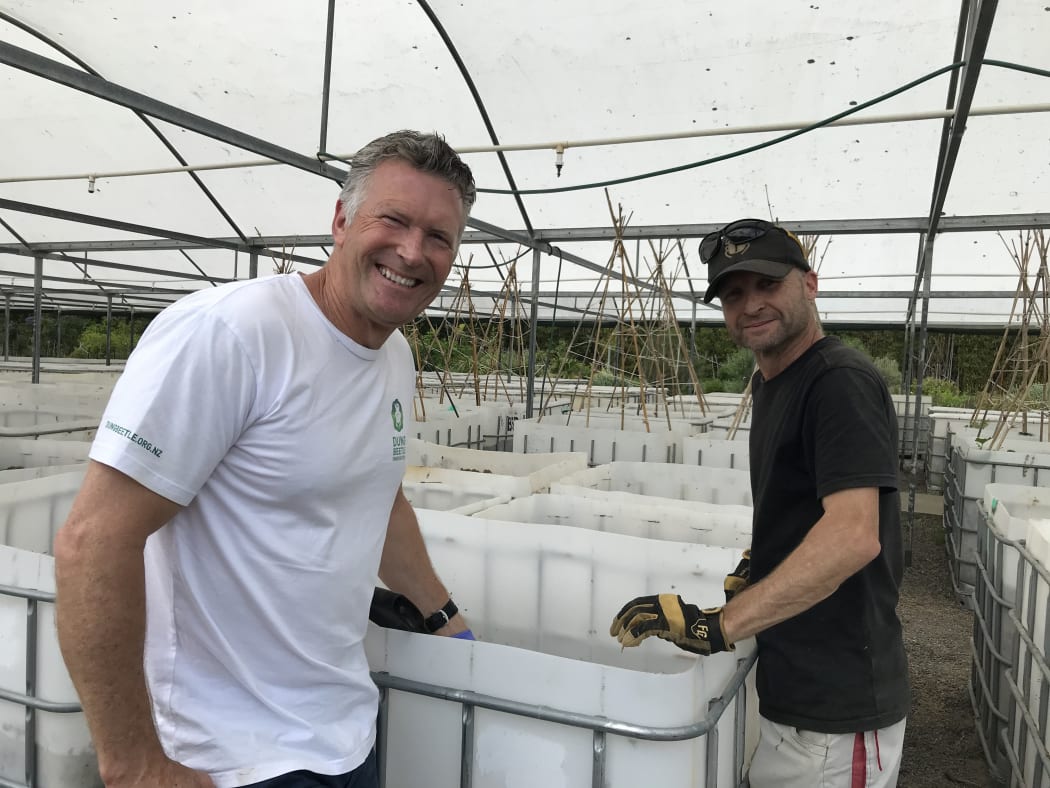
Dr Shaun Forgie and Dung Beetle Innovations' lead technician Shelton Thorburn. Photo: RNZ/Nikki Mandow
But their troubles were far from over.
Who’ll buy my beetles?
For a start, farmers have proved reluctant to spend money on dung beetles. Not only are they quite expensive - a single species package of a few hundred beetles costs around $2000; a “whole farm” package, with four species is $6000.
But they are also a pretty long term investment.
The Australians spent 20 years putting dung beetles on farms around the country, and they’re still topping up with more beetles where they are needed. A farmer who puts dung beetles on land today isn’t looking at full dung-obliterating coverage for probably a decade.
And of course if the beetles aren’t satisfied with the dung on one farm, they can up and leave to the neighbours, who haven’t invested a dollar.
Forgie reckons only about 15 percent of farmers really get dung beetles.
“I really don't know what stops farmers from buying them. I think many of them have never really thought about it. And quantifying the benefit of having them is relatively difficult.”
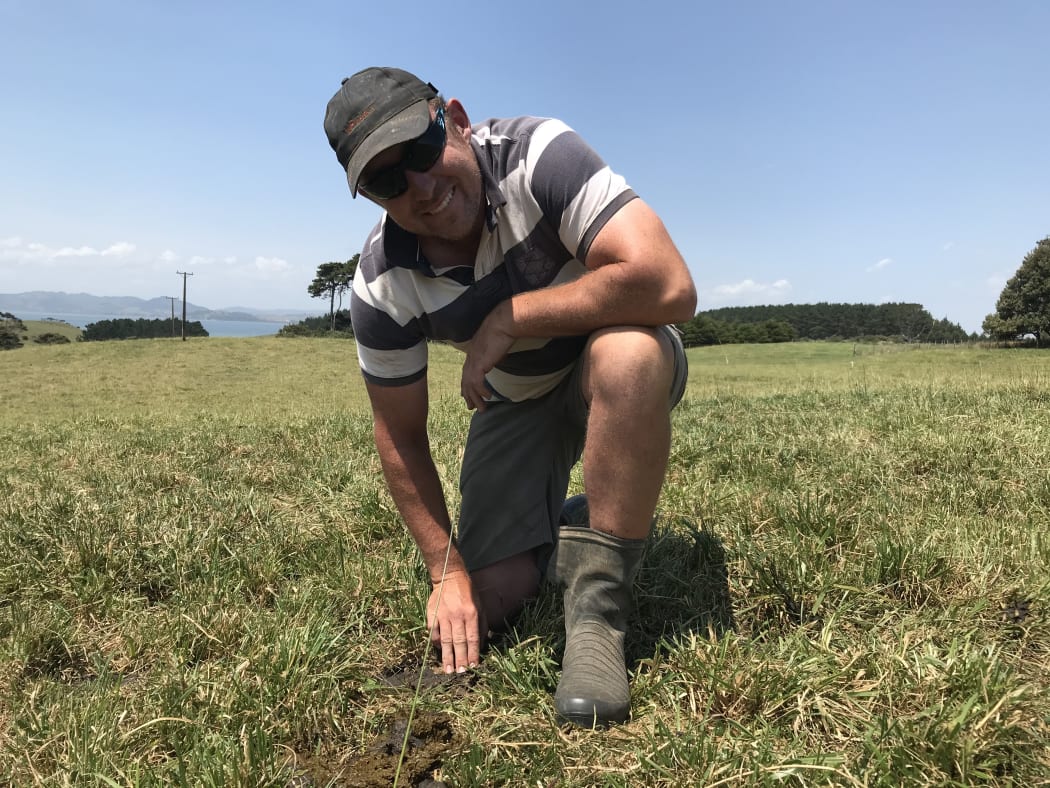
Shelly Beach farmer David Kidd has dung beetles on his property and appreciates them. but like most farmers he's never bought any. Photo: RNZ/Nikki Mandow
But so far the numbers are pretty small. Barber says the company will probably sell about 300 beetle colonies this year, about the same as last year. But to get to just 10 percent of farmers he’d need to sell almost 15,000 colonies over the next five years.
And for 30 percent of farmers to have dung beetles that would mean selling 45,000 colonies in five years.
The other potential market for dung beetles is local and national government. After all, the Australian government has pumped millions into dung beetle introduction programmes since the 1960s, partly as a way to control its massive fly problem.

According to Wikipedia, the success of the Australian Dung Beetle Project in controlling flies is one reason for the growth of café culture there. Up until the 1950s, before the start of the project, bush flies were so problematic that it was illegal for cafés to have an outside area unless it was enclosed by fly-wire. Photo: Sergio Pitamitz
But with subsidies unpopular in New Zealand, getting the authorities onside has also proved difficult.
The Greater Wellington Regional Council came on board early on, targeting Wairarapa water catchment areas with runoff problems and offering farmers 50 percent subsidies to buy dung beetles.
This year Greater Wellington will spend around $50,000 on dung beetle subsidies; it spent a similar amount last year.
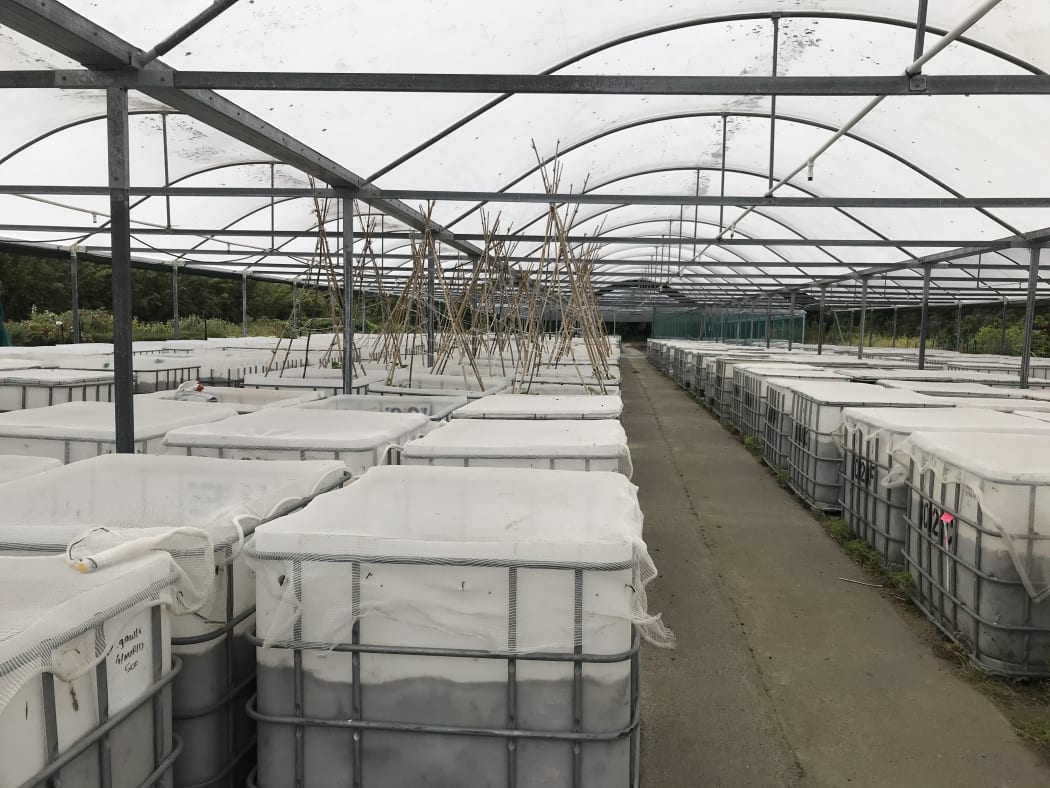
Dung Beetle Innovations is struggling to find markets for the thousands of beetles it is breeding. Photo: RNZ/Nikki Mandow
And Forgie got a bit of good news this month. Hawkes’ Bay Regional Council announced it was releasing 10,000 beetles at Mahia, south of Gisborne - the largest single release in New Zealand.
Bevan Parker, farm manager at Pongaroa Station, says the beetles are a great addition to his farm.
“Dung beetles are just awesome, they’re everyone’s friend. They eat poo and by processing and burying it they improve soil quality, and reduce run-off and parasite transmission. Better soil, better water, better animal health and better ecosystems, it’s a win for everyone."
But that’s only two councils, and the Government isn’t showing any enthusiasm for a national programme. Agriculture Minister Damien O’Connor says dung beetle research has received almost $750,000 in government funding to date, and now it’s up to Dung Beetle Innovations to market the product to farmers.
“There could be widespread use of dung beetles if they can convince farmers of their value. In the meantime, if they want further Government funding they need to shape up and complete a proper application like everyone else.”
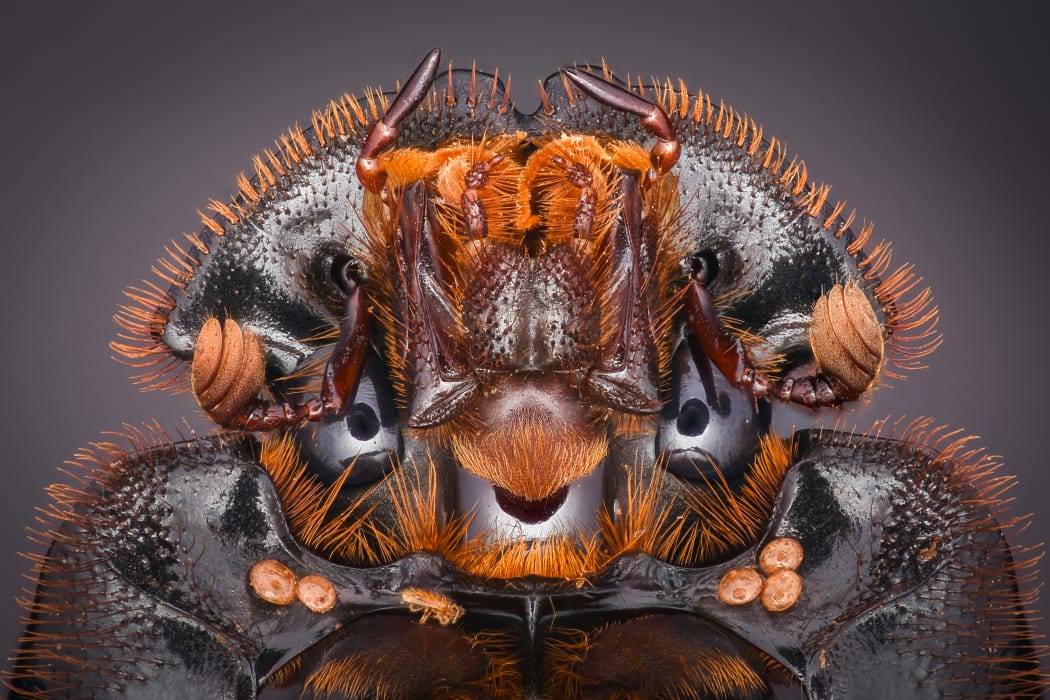
Extreme close up of a dung beetle Photo: 123RF
Three fun dung beetle facts
- There are more dung beetles than mammals on the planet. Around 5300 species of mammals but more than 6000 different species of dung beetle.
- Dung beetles, not ants, are the strongest critters in the world. Some dung beetles can move more than 1,100 times their own body weight. For the strongest ant, the leaf cutter, it’s only 50 times.
- The Ancient Egyptian god Khepri, a symbol of creation and resurrection and the god which controlled the movement of the sun, was half man, half dung beetle. That’s because the Egyptians saw dung beetles push ball of dung across the earth and then underground, and imagined Khepri doing the same with the sun.
- The dung beetle is still revered by some - like Pete Denahy.

